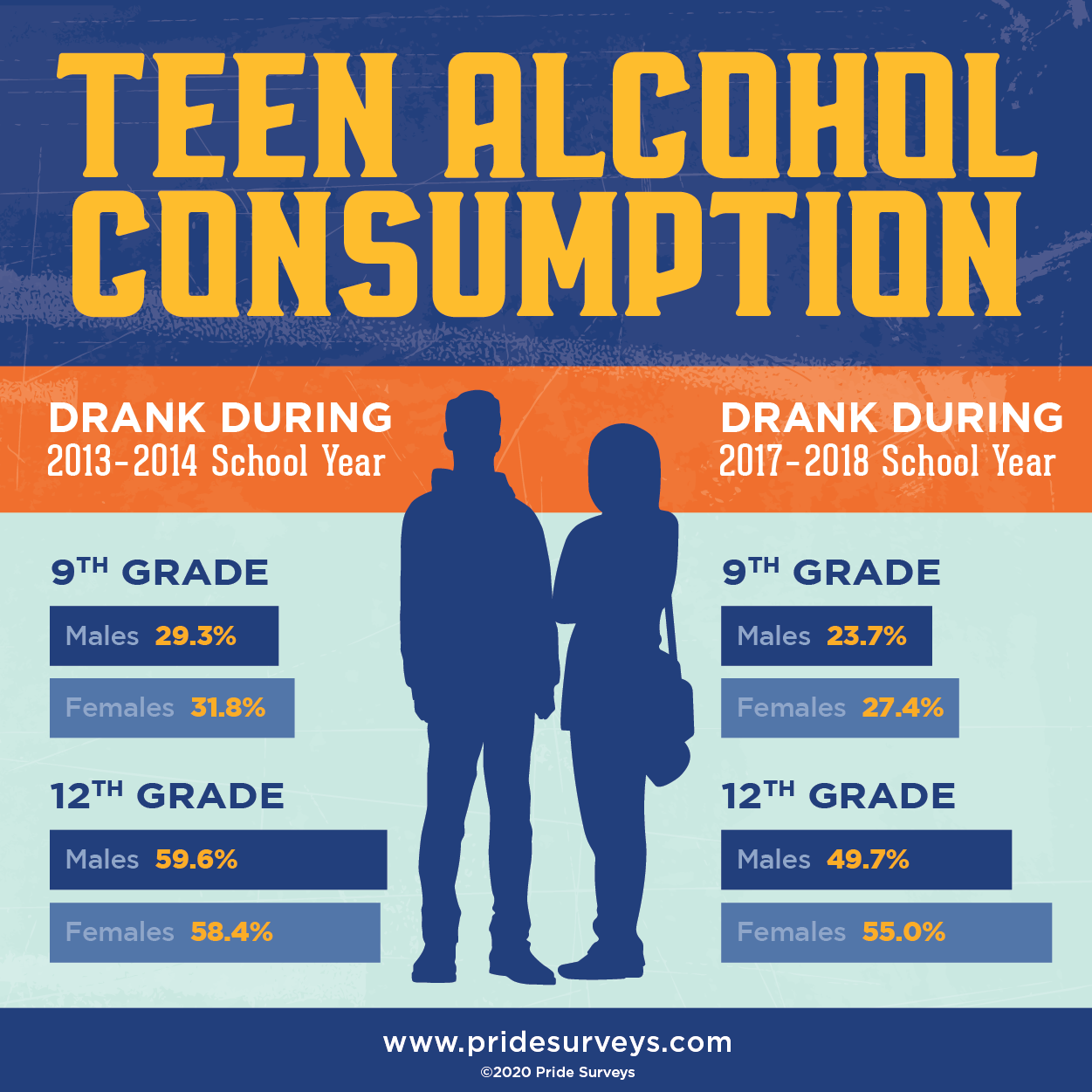The perplexing landscape of youth alcohol consumption presents an array of challenges that delve deep into social, psychological, and health dimensions. The consumption of alcohol among adolescents is a pressing issue, often exacerbated by a milieu of societal pressures, availability, and inadvertent normalization. This discourse embarks on an exploration of the multifaceted dimensions of youth alcohol consumption, unearthing patterns, consequences, and preventive measures that necessitate attention and informed action from various stakeholders.
One must first delineate the extent to which adolescents engage in alcohol consumption. Statistics reveal an alarming trend; a significant proportion of high school students report having consumed alcohol at some point. This initial experience often occurs during social gatherings, where the social fabric intertwines with the intoxicating allure of alcohol. Research indicates that early exposure to alcohol can catalyze chronic patterns of consumption, thus perpetuating a vicious cycle that manifests in various deleterious outcomes.
Amidst the labyrinth of youth alcohol consumption, it is essential to consider the role of peer influence. The adolescent years are characterized by an intense desire for acceptance and belonging. This yearning can propel young people toward behaviors that align with the expectations of their peer group, including alcohol consumption. A qualitative study revealed that peer pressure is a substantial factor prompting adolescents to partake in drinking activities, often in hopes of garnering social capital. As such, the social dynamics of youth culture significantly shape drinking behaviors.
Furthermore, family environments play a pivotal role in shaping attitudes towards alcohol. The family unit undoubtedly acts as a primary source of influence. A supportive and communicative family environment may serve as a protective factor, while exposure to parental alcohol use or permissive attitudes towards drinking can lead to an increased likelihood of adolescent alcohol consumption. Thus, the intersection of familial attitudes and adolescent behavior merits rigorous examination, as it offers insights into mitigating risky alcohol-related behaviors.
As the insidious nature of alcohol consumption among youth unfolds, the consequences cannot be overstated. Engaging in alcohol consumption during critical developmental periods poses significant risks to mental and physical health. The potential for alcohol abuse, addiction, and related health issues escalates, pivoting towards long-term ramifications. For instance, adolescents who consume alcohol are more likely to develop cognitive deficits, mood disorders, and an increased propensity for engaging in risky behaviors, such as unprotected sex and substance abuse.
Moreover, the interplay between alcohol and educational outcomes cannot be disregarded. Studies indicate that adolescents who consume alcohol tend to exhibit poorer academic performance, higher dropout rates, and diminished educational aspirations. The cognitive impairment associated with alcohol consumption may contribute to these outcomes, limiting a young person’s ability to engage fully in the learning environment. The implications of this are profound, shaping the future of individuals and communities alike.
Importantly, the media plays an instrumental role in the normalization and portrayal of alcohol consumption among youth. Advertisements often glamorize drinking, positioning it as a quintessential part of social life. These representations can craft an environment where alcohol consumption is perceived as an inherent aspect of youth culture, thus eroding perceived risks. It is imperative to critically assess how media narratives shape public perceptions and influence adolescent behavior towards alcohol.
When exploring potential interventions, a multi-faceted approach is warranted. Engaging educational programs that focus on the ramifications of alcohol consumption, coupled with skills-based training, can empower young individuals to make informed decisions. These programs should also include components that address peer pressure and equip adolescents with strategies to navigate social situations where alcohol is present.
Moreover, parental involvement must not be overlooked. Research suggests that parental monitoring and open dialogue about alcohol can significantly deter youth consumption. Workshops that foster skill development for parents can cultivate healthier family dynamics and empower families to engage in meaningful conversations about alcohol use.
Additionally, communities bear responsibility in shaping youth alcohol consumption patterns. Policy initiatives that regulate the availability of alcohol to minors, alongside community awareness campaigns, can create environments that promote healthier behaviors. Engaging local stakeholders, including schools, law enforcement, and health services, can facilitate comprehensive strategies aimed at reducing youth alcohol consumption.
In conclusion, youth alcohol consumption is a complex issue that intertwines various societal, familial, and individual factors. By dissecting the patterns of consumption, understanding the influence of peer dynamics and familial relationships, and exploring the wider socio-cultural implications, a holistic strategy can be developed to address this pressing concern. The ramifications of youth alcohol consumption are far-reaching; thus, informed intervention and prevention strategies are indispensable. Ultimately, a concerted effort from families, educators, policymakers, and communities will be essential in shifting the paradigm toward healthier behaviors among the youth population.
